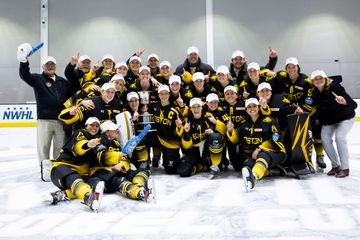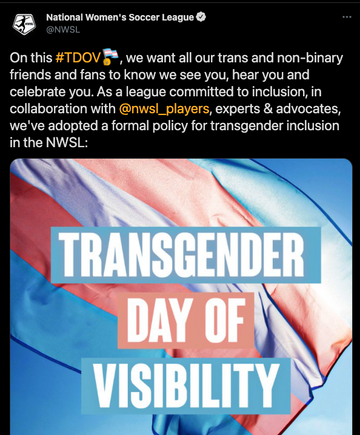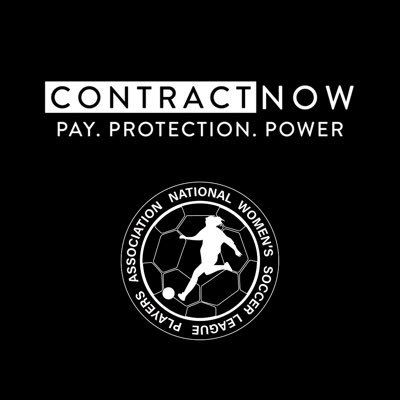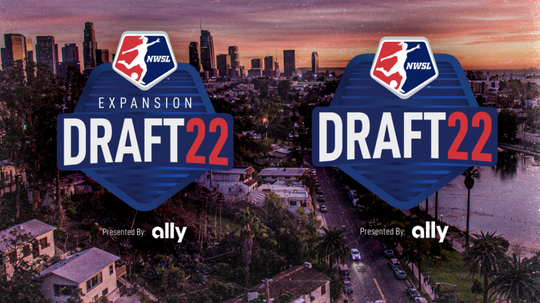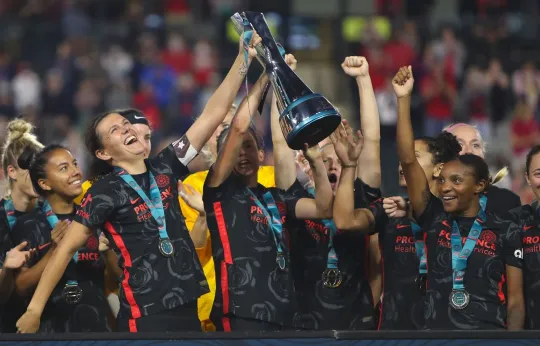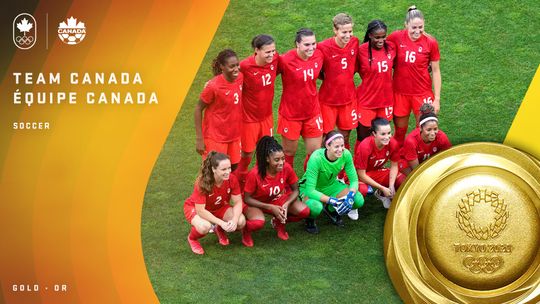The National Women's Soccer League released its Policy on Transgender Athletes on March 31, 2021 -- on Trans Day of Visibility. This choice, and the policy itself, highlight both the problem with "visibility" for its own sake and trans inclusion policies as currently envisioned by sporting bodies and cisgender people.
With each passing year, TDOV has increasingly been hollowed out, its meaning surgically removed by organizations run by cisgender leaders and cisgender allies who share meaningless platitudes without committing to substantive action. Founded in 2009 by transgender activist Rachel Crandell to celebrate trans lives in a media landscape that revels in the violence trans people experience, at its heart, TDOV can be a day for trans people to celebrate ourselves and each other, our joy and persistence in a world designed to eradicate us. I'm heartened by the numerous posts that crossed my twitter feed on Wednesday from trans folks celebrating their excellence and their passions.
But as the day has grown in recognition, its popularity has increased with organizations and "allies" to signal to cis supporters a heightened progressiveness. I'm sure I'm not the only trans person who had a growing sense of dread as March 31 approached this year, knowing that an increasing number of corporations, government agencies, and sports associations would co-opt the day for their own purposes. These are groups overwhelmingly led by and made up of cis people. These are groups that overwhelming prioritize cis people. These are groups that do not meaningfully consider the experiences of trans people on an ongoing basis.
This type of participation is why "visibility" is so dangerous. Trans people are more visible than ever, but that has not necessarily made it safer to be trans. Trans people, especially trans people of color, remain incredibly vulnerable in all aspects of life. The type of visibility promoted by organizations on TDOV is often superficial and ignores the lived experiences of trans people. Visibility, without consideration of the material reality of trans people, cannot lead to substantive change.
In many ways, "visibility" is part of the problem. Trans people are more visible than ever and the campaigns to end our lives, whether it is to prevent us from using the right public washrooms, playing sports, or accessing medical care, have stemmed in part from this raised profile. The solution is not to be silent or hide from view, but to dramatically increase the material support trans people receive. So far, this type of broad support is dangerously lacking.
Organizations and would-be allies sharing messages on social media like "Trans Rights are Human Rights" or "Trans People are Loved" does nothing to change systemic discrimination and violence trans people face daily. To do so on TDOV without consistent and measurable monetary and material support and institutional change highlights how frequently decisions made on behalf of trans people are made without consulting gender diverse communities. Decisions regarding our lives should be made by trans, nonbinary, genderqueer, agender, Two-Spirit, gender nonconforming people.
The extent to which cis people participate in these performative gestures in sporting communities illustrates that transgender athlete policies in sports aren't about fairness or preserving the integrity of athletic competition, but about controlling trans lives and keeping trans people from fully participating in public life.
Which brings us back to the NWSL's recently announced NWSL Policy on Transgender Athletes. Any time a league creates an inclusion policy it is integral to be clear about who was involved in creating that policy. You shouldn't have to be an industry insider to find out how many gender diverse folks were involved, if any, in created a policy that sets the parameters of our inclusion. The NWSL did not provide this information in its announcement or promotion of the policy and has not provided any clarifications on its social media accounts or website. In fact, the new policy was not even featured as part of the "News" tab on its website. As of writing (April 2), the featured story on the website is from March 30, the day before the policy's release, and is a somewhat ironic post announcing a first league-wide banking sponsor Ally.
The NWSL's trans inclusion policy has received very little mainstream media coverage, with the exception of Julia Poe's piece in the Orlando Sentinel, published on April 1. Poe's piece provides more details on the process of creating these rules and reveals that the NWSL partnered with the National Center for Lesbian Rights (NCLR). As Poe explains, the policy was drafted by NWSL general counsel and it was then vetted by NCLR senior staff attorney and transgender youth project director Asaf Orr. Orr spent six months reviewing and editing the policy with the NWSL and NWSL Players' Association and was approved by all three before being adopted.
The NCLR has been a vocal supporter of trans communities and has specifically opposed the wave of trans youth sports bans sweeping the United States. The NCLR has also addressed numerous other issues impacting the live of trans people, especially trans youth. The NCLR staff includes trans individuals. However, Orr is cis. I do not doubt the commitment of the NCLR nor Orr's law credentials and experience working with trans youth. But projects like these, should they wish to fulfill their stated goals, should be led by people who are actually trans and can speak to the rich diversity of trans lived experience.
There are several obvious issues with this new policy. The policy fails to address the inclusion of nonbinary athletes and does not recognize that people can be both trans and nonbinary. (The league's only out trans player, OL Reign midfielder and Canadian international Quinn, identifies as both.) The actual policy is a mere 807 words, 196 of which address what happens if an athlete's gender is challenged. There is nothing describing how the league will protect trans athletes specifically or gender diverse athletes more broadly.
The policy also highlights testosterone as a measure of competitive advantage and singles out trans athletes with testosterone levels above the "typical limits of women athletes." While the NWSL's regulations around T levels are broader than many other current policies, it still follows the guidelines and rulings created by the International Olympic Committee in 2015. They are arbitrary, sexist, and racist norms based on an erroneous understanding of both testosterone and what exactly constitutes an "unfair" advantage.
While it's not made clear in the policy itself, Orr doesn't "interpret the policy to include testosterone requirements for cisgender women in the league," as he told Poe in the Sentinel. At its core, then, this policy creates two sets of regulations for NWSL players: one for cis women and another for gender diverse athletes. The reality of this is that gender diverse athletes are subject to specific and invasive medical regulation not based on the health needs of each individual, but subject to the whims of the league itself, as the NWSL will monitor trans players' eligibility at its own discretion.
While the regulation states that all athletes assigned female at birth are eligible to participate in the league (provided they meet certain regulations), the reality is afab players undergoing hormone therapy must maintain arbitrary testosterone levels or seek therapeutic exemptions. Unfortunately, these exemptions are determined at the NWSL's discretion and nothing in the regulations describes how these determinations with be made. I'm forced to wonder what sort of judgement someone like me (as an afab person who's built like a truck, has never taken T, and has a full beard) could expect to receive at the league's discretion. Discretionary policy will always lead to discriminatory decisions.
The NWSL policy describes gender in ways that do not match with lived experience. When discussing what the regulation means for amab athletes, the policy states: "The athlete has declared that her gender identity is female. The declaration cannot be changed, for sporting purposes, for a minimum of four years from the declaration."
Why? Despite Orr's suggestion that this policy is inclusive of nonbinary people, this section really does read as "amab nonbinary people need not apply." Some gender diverse folks know right away who they are; for other it's a process, involving many steps and time. Despite what cis people may think, none of this is meant to be deceptive or untrustworthy, and it certainly is not meant to obtain an unfair advantage in sporting competition. I've been out as trans for more than 6 years. In that time how I identify has changed and evolved as I've become more accepting and understanding of my own identity. This isn't a unique experience and policies should seek to acknowledge the fluid reality of trans, nonbinary, and gender-nonconforming experience.
The NWSL's regulations are similar to other seemingly progressive trans inclusion policies created by the NWHL, USA Hockey, and U Sports, to name a few. You will find many trans people who support these policies because these policies create space for some trans athletes to play while living authentically. Publicly out trans athletes participating in elite level competition is a welcome sight that I cherish, and I understand this sentiment.
But most of these policies have the same exclusionary effect as trans athlete bans. Both fixate on an alleged "competitive advantage" based on testosterone levels. Both narrowly define whose womanhood is accepted. Both dictate the personal medical decisions of marginalized individuals. Both undermine the fundamental right of gender diverse people to participate in sports and self-identify.
Nonbinary, Two-Spirit, genderqueer, agender, gender nonconforming, and trans folks do not need cis permission to participate in organized sports at any level, from youth sports to the professional ranks. Women's or men's. Sports are not inherently cis, and true acceptance does not come with limits. We have the right to play -- all of us -- and gender diverse folks should not have their inclusion dependent on the whims of cis people.
But cis people do control sporting bodies, and government agencies and are increasingly regulating the existence of trans people with the express purpose of preventing us from participating in public life. These are policies and regulations of extermination. What is the difference between a state legislature that narrowly defines what a girl is and whether she can play youth sports and the NWSL that narrowly defines who a woman is? For sports leagues that want to actually be inclusive, self-identification is the only path.
It is certainly a choice to release a trans inclusion policy on TDOV that excludes both the infinite variety of gender diverse lived experience and elides with trans exclusion efforts, but an act of acceptance and welcoming it is not.
Trans people have participated in leagues without these policies in place. We are supposed to be on the track, ice, and field. But too often cis people, especially those with considerable political power, view inclusion policies as a magnanimous gesture granting a select few the special privileges of participation. By privileging cis women, sports bodies are helping cement the harmful and dangerous narratives put forth by transphobic politicians and trans-exclusionary media personalities. The truth is that these bigoted viewpoints are proliferating, and another prominent sporting organization giving credence to the idea that testosterone levels confer a competitive advantage only adds fuel to their hatred.
The real unfair competitive advantage belongs to cis white men, who deliberately and destructively hoard resources to ensure an illegitimate hold on public attention and power. The priority of mainstream sports, both women's and men's, is clear: keep the status quo at all costs. While the status quo damages women's sports, true queer and trans inclusion would undermine the power that cis white men and women hold in sports competition, media, and culture. The NWSL is the latest league to prioritize that power over trans lives.
(Photo: Travis Jones/Unsplash)


